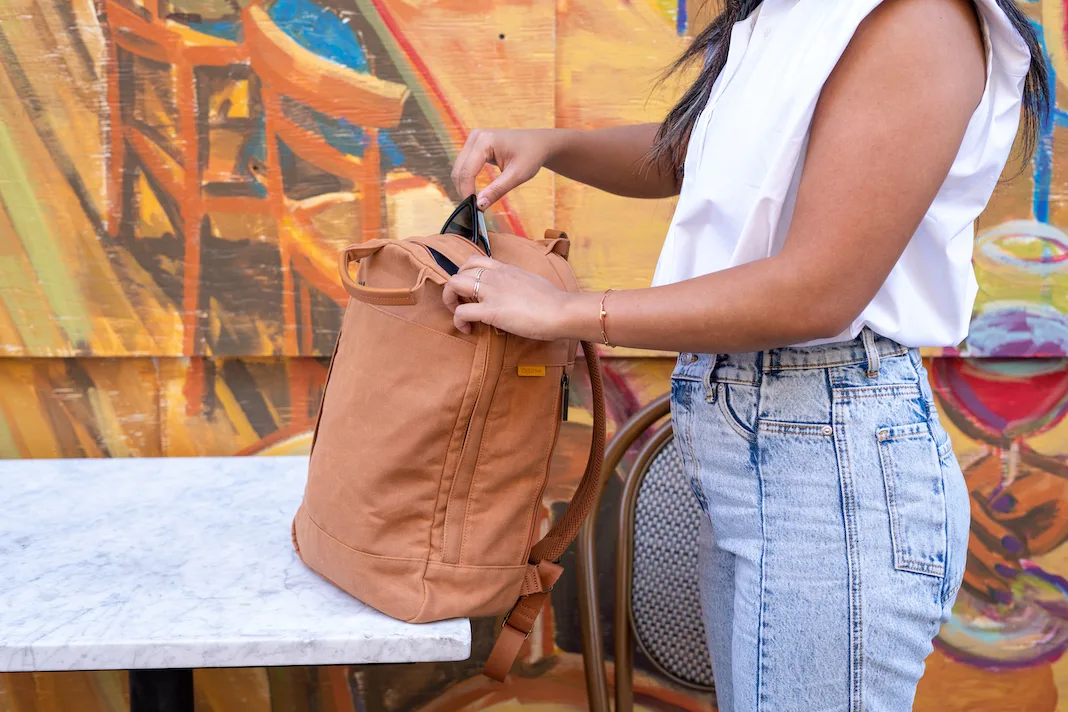Embracing Sustainability: The Rise of the Sustainable Backpack

In a world increasingly conscious of environmental concerns, the concept of sustainability has permeated various aspects of our lives, including the products we use. One such product that has seen a remarkable transformation towards sustainability is the backpack. A staple for students, travelers, and professionals alike, the backpack has evolved from being merely a functional accessory to a symbol of conscious consumerism. This article delves into the intricacies of sustainable backpacks, exploring their features, benefits, and their role in promoting eco-friendly practices.
The Need for Sustainable Backpacks
Traditional backpacks, often made from non-biodegradable materials like synthetic polymers, have a detrimental impact on the environment. These materials not only contribute to landfill waste but also involve resource-intensive manufacturing processes and carbon emissions. As consumers become more aware of these issues, the demand for sustainable alternatives has risen significantly.
Features of a Sustainable Backpack
- Eco-Friendly Materials: Sustainable backpacks are crafted from a variety of eco-friendly materials such as organic cotton, recycled PET bottles, hemp, and even upcycled fabrics from old garments. These materials reduce the reliance on virgin resources and minimize waste generation.
- Biodegradability: Some backpack manufacturers are experimenting with biodegradable materials that can naturally break down over time without leaving harmful residues in the environment. This addresses the issue of plastic waste and its long-lasting impact.
- Non-Toxic Dyes: Eco-conscious backpacks often use non-toxic and water-based dyes for coloring fabrics. This reduces the release of harmful chemicals into water systems during the dyeing process.
- Durability and Repairability: A key element of sustainability is longevity. Sustainable backpacks are designed to withstand daily wear and tear, reducing the need for frequent replacements. Additionally, many brands offer repair services to extend the lifespan of their products.
- Minimalist Design: Many sustainable backpacks feature a minimalist design, avoiding excessive embellishments and components that may not be essential. This not only reduces resource consumption but also encourages mindful consumption.
- Ethical Manufacturing: The sustainable backpack movement often aligns with fair labor practices, ensuring that the people involved in the production process are treated ethically and receive fair wages.
Benefits of Sustainable Backpacks
- Reduced Environmental Impact: Sustainable backpacks significantly reduce the use of non-renewable resources, lower carbon emissions, and minimize waste generation. This contributes to a healthier planet by conserving resources and reducing pollution.
- Positive Brand Image: Brands that prioritize sustainability are viewed favorably by environmentally conscious consumers. Investing in sustainable backpacks can enhance a company’s reputation and attract a loyal customer base.
- Long-Term Savings: Although sustainable backpacks might have a slightly higher upfront cost, their durability and longevity result in long-term savings. Consumers need not replace their backpacks as frequently, reducing overall expenses.
- Encouraging Sustainable Practices: Using a sustainable backpack serves as a visual reminder of one’s commitment to a greener lifestyle, encouraging others to make environmentally conscious choices as well.
The Role of Sustainable Backpacks in Promoting Eco-Friendly Practices
Sustainable backpacks are more than just functional accessories; they symbolize a broader shift towards conscious consumerism and responsible choices. By adopting a sustainable backpack, individuals make a statement about their commitment to reducing their environmental footprint. This can spark conversations and inspire others to consider similar choices in their lives.
Conclusion
As sustainability takes center stage in our collective consciousness, the humble backpack has undergone a remarkable transformation. From its materials to its design and manufacturing processes, every aspect of the backpack’s evolution reflects a commitment to reducing environmental impact. By embracing sustainable backpacks, consumers contribute to a more eco-friendly world and send a powerful message that small choices can lead to significant positive changes.





